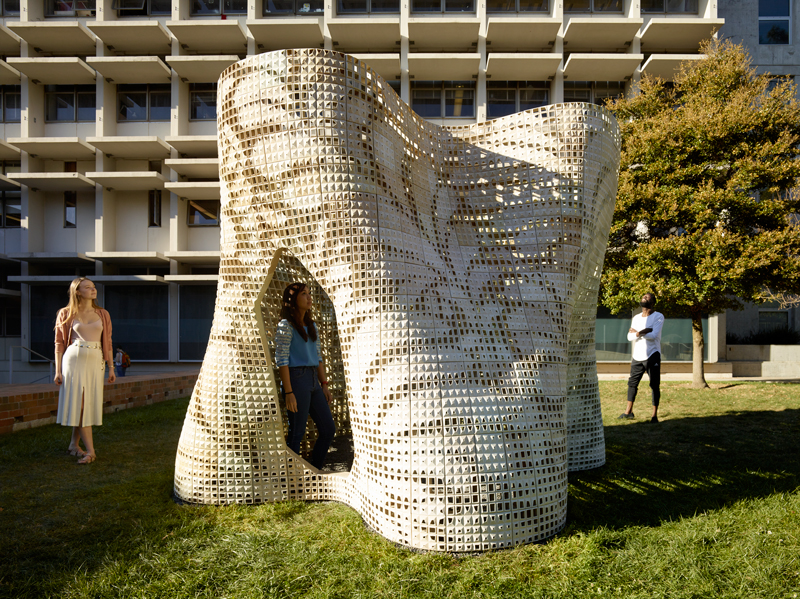Bloom Isn’t Your Average 3D-Printed Structure

The 3D printed Bloom pavilion is functional and elegant. Courtesy of Emerging Objects.
Latest News
March 16, 2015
The idea there could be anything like a standard 3D printed structure probably would have gotten you laughed out of the room even three years ago. At that point, Enrico Dini was still begging people to take a look at his D-Shape technology, and Winsun hadn’t gotten around to taking experimenting with mixing additive manufacturing (AM) and architecture.
In short, times have changed and it seems virtually inevitable that some company or another will begin to use AM for construction purposes. Emerging Objects may have developed a different, and realistic, method of producing 3D-printed structures.
 The 3D-printed Bloom pavilion is functional and elegant. Courtesy of Emerging Objects.
The 3D-printed Bloom pavilion is functional and elegant. Courtesy of Emerging Objects.Emerging Objects is an interesting group that we’ve featured a number of different times on Rapid Ready. Its founders come from academia, and the company exists to probe the boundaries of what is possible with 3D printing. It then takes that information and passes it along to its clients.
The basic idea behind 3D-printed architecture is that a building can be erected far more quickly using AM technologies than by standard labor. The difficult part of that is the 3D printer. To print a house on-site at speed requires the use of a massive 3D printer, like that designed by the aforementioned Dini. Winsun has rejected that model and instead prints parts that are transported to the construction site and quickly fit together.
Emerging Object has split the two ideas by producing 3D-printed bricks using a special material. From the website:
“Each block is printed using a farm of 11 powder 3D printers with a special cement composite formulation comprised chiefly of iron oxide-free Portland cement. … 3D printed cement requires no formwork and produces no waste and the support material can be reused to produce more blocks. Coupled with Portland cement is an ecologically derived UV-resistant polymer that reduces the greenhouse gas emissions from production of resins by 50% over conventional petroleum based epoxies that uses plant-based materials that do not compete with food sources or displace food-based agriculture.”
 The 3D-printed bricks used to build Bloom. Courtesy of Emerging Objects.
The 3D-printed bricks used to build Bloom. Courtesy of Emerging Objects.The company tested the process by building an attractive outdoor sculpture/pavilion named Bloom. The object reaches 9 ft. in height and has around a 12 x 12 ft. footprint. It was built using a total of 840 of Emerging Objects 3D-printed bricks.
The bricks are light enough they can be transported to the construction site and handled with ease. The bricks can also be produced in quantity, given the use of enough 3D printers. According to Emerging Objects, 11 AM systems could produce 30 bricks each day, which would provide enough building materials to reproduce Bloom in 28 days.
Below you’ll find a video about the potential for mixing AM with a different type of brick.
Sources: Gizmag, Emerging Objects
Subscribe to our FREE magazine, FREE email newsletters or both!
Latest News
About the Author
John NewmanJohn Newman is a Digital Engineering contributor who focuses on 3D printing. Contact him via [email protected] and read his posts on Rapid Ready Technology.
Follow DE





